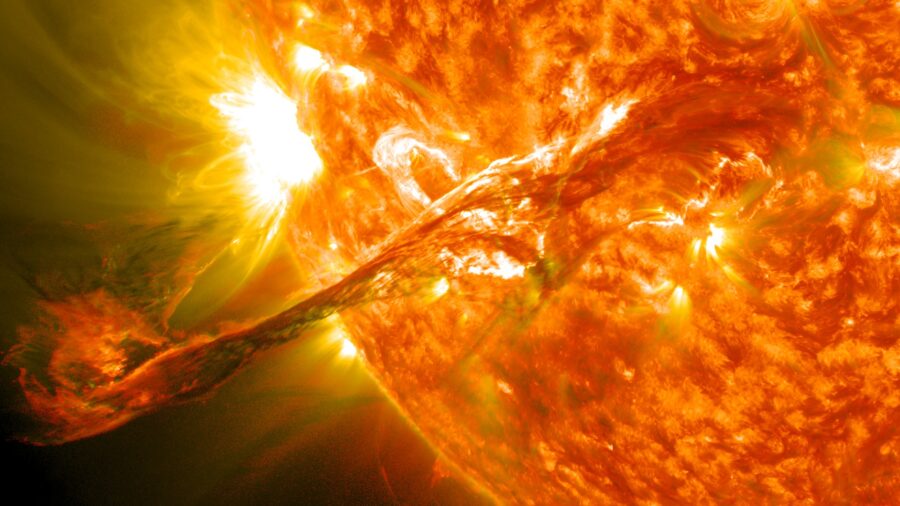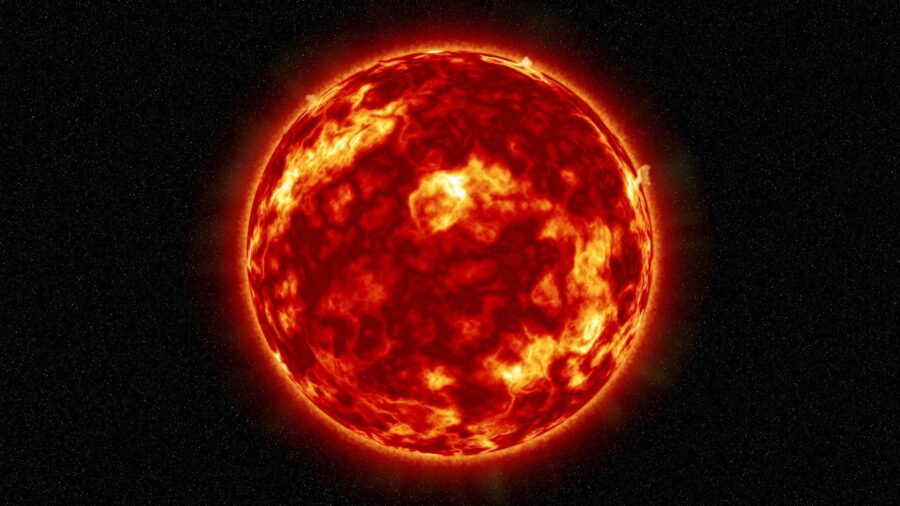Solar Storms Bring Earth To Highest Temperatures In 20 Years
Solar storms are causing Earth's temperature to dramatically increase, making this the hottest summer in decades.

As if we didn’t have enough to worry about already, the Earth just broke a 20-year temperature record, which, apparently, is not a good thing. According to Live Science, the Earth is currently peaking at the hottest it’s been in a long time, thanks to all the geometric solar storms that have been smashing into our planet over the course of the last year.
According to the reports, scientists are concerned about the Earth’s thermosphere, a vital layer of the atmosphere extending from the mesosphere to the exosphere. Because of these solar storms, the thermosphere has recently experienced a significant temperature increase, the highest it’s been in two decades. And that’s not the worst of the news—according to experts, while the thermosphere is currently hot, it’s about to get a whole lot hotter.
In fact, this warming trend may continue over the next few years as the sun’s activity intensifies and that great ball of fire in the center of our solar system continues to spit out solar storms that our planet keeps soaking up. So, what does that mean for us? Experts warn that it could have potentially negative implications for Earth-orbiting satellites.
For more than 21 years, NASA has been monitoring the thermosphere temperature using infrared radiation emitted by carbon dioxide and nitric oxide molecules. Data collected from NASA’s Thermosphere, Ionosphere, Mesosphere, Energetics, and Dynamics (TIMED) satellite is converted into the Thermosphere Climate Index (TCI) to measure the temperature changes. On March 10, the TCI reached its peak at 0.24 TW, a level unseen since December 2003. Geomagnetic storms, aka solar storms, caused by coronal mass ejections (CMEs) and solar wind, were responsible for the recent temperature spike.

These solar storms deposit energy in the thermosphere, leading to increased levels of infrared emission from nitric oxide and carbon dioxide. While infrared emissions usually cool the thermosphere after a storm, consecutive storms can keep the temperature elevated. In other words, the sun keeps spitting out energy, and we keep soaking it up, which is making one of our outer layers pretty freaking hot.
Every 11 years, the Sun goes through a cycle. A certain phase in this cycle is called the solar maximum, and that’s when the Sun is known to spit out the most intense solar storms. Scientists from NASA and NOAA predict that the next solar maximum will occur in 2025, suggesting that the warming trend in the thermosphere may continue in the coming years.
This is some pretty bad news for the satellites orbiting our atmosphere. As Martin Mlynczak, a leading researcher at NASA explains, “The thermosphere expands as it warms, resulting in increased aerodynamic drag on all satellites and on space debris.” This heightened drag can cause satellites to veer closer to Earth, leading to collisions between satellites or even complete orbital failure, as exemplified by the SpaceX Starlink incident in February 2022 following an unexpected solar storm.
While satellite operators can mitigate these risks by adjusting the orbit of their spacecraft, these solar storms are almost unpredictable, which means that not only is it challenging to anticipate the need for such maneuvers, but often once we know it’s time to adjust the orbit, it’s often too late. Developing strategies to predict space weather more accurately and implementing contingency plans for satellite repositioning is essential for safeguarding valuable space assets.
In the meantime, as solar maximum approaches and solar storms increase, space agencies and satellite operators must stay vigilant and adapt to changing space weather conditions. By investing in research, predictive models, and contingency plans, we can mitigate potential disasters and ensure the continued success of space exploration and satellite technology.












